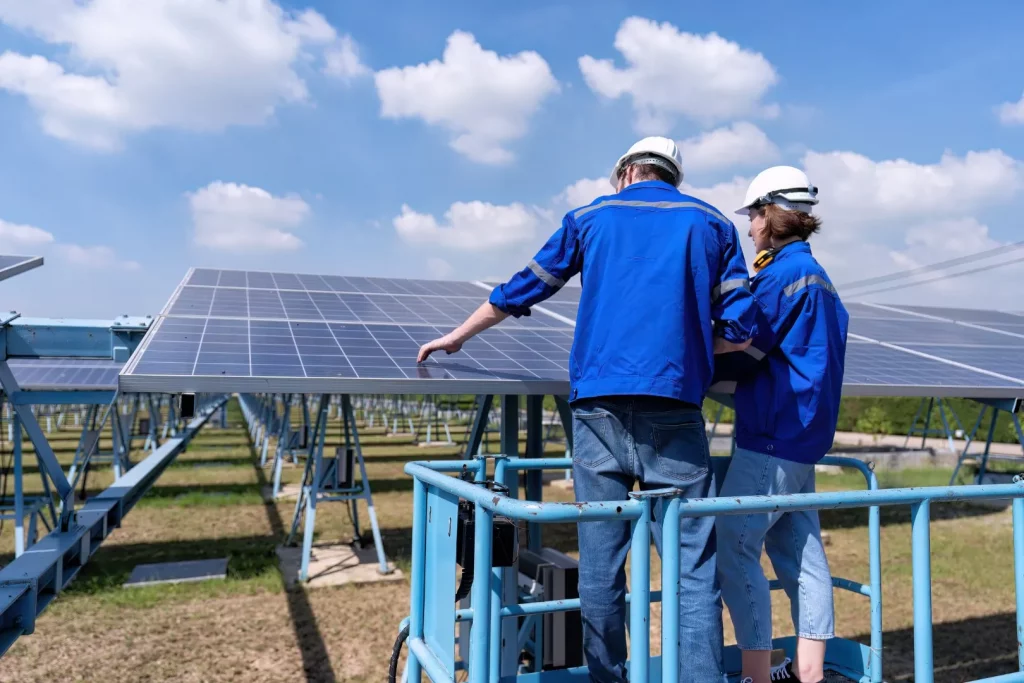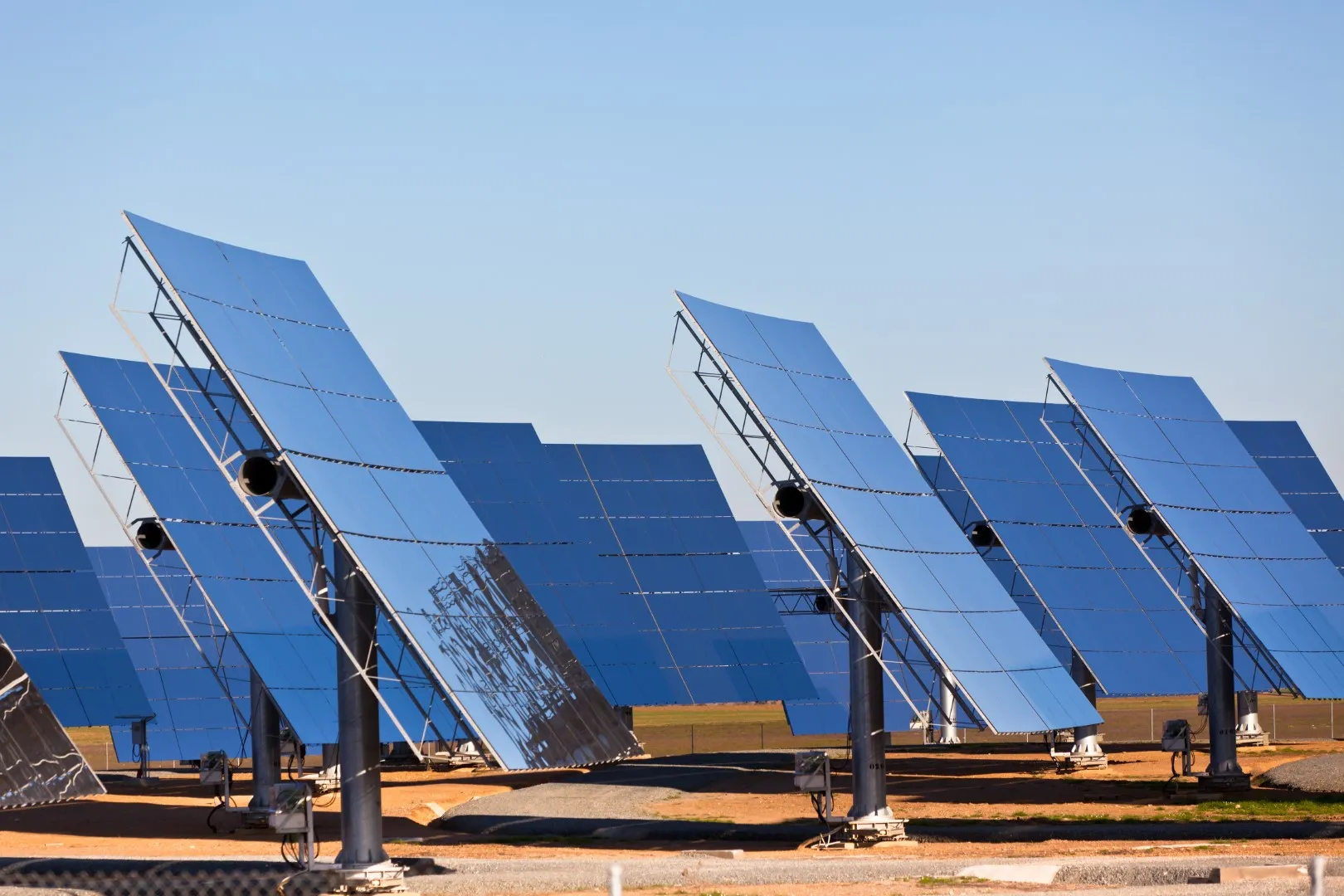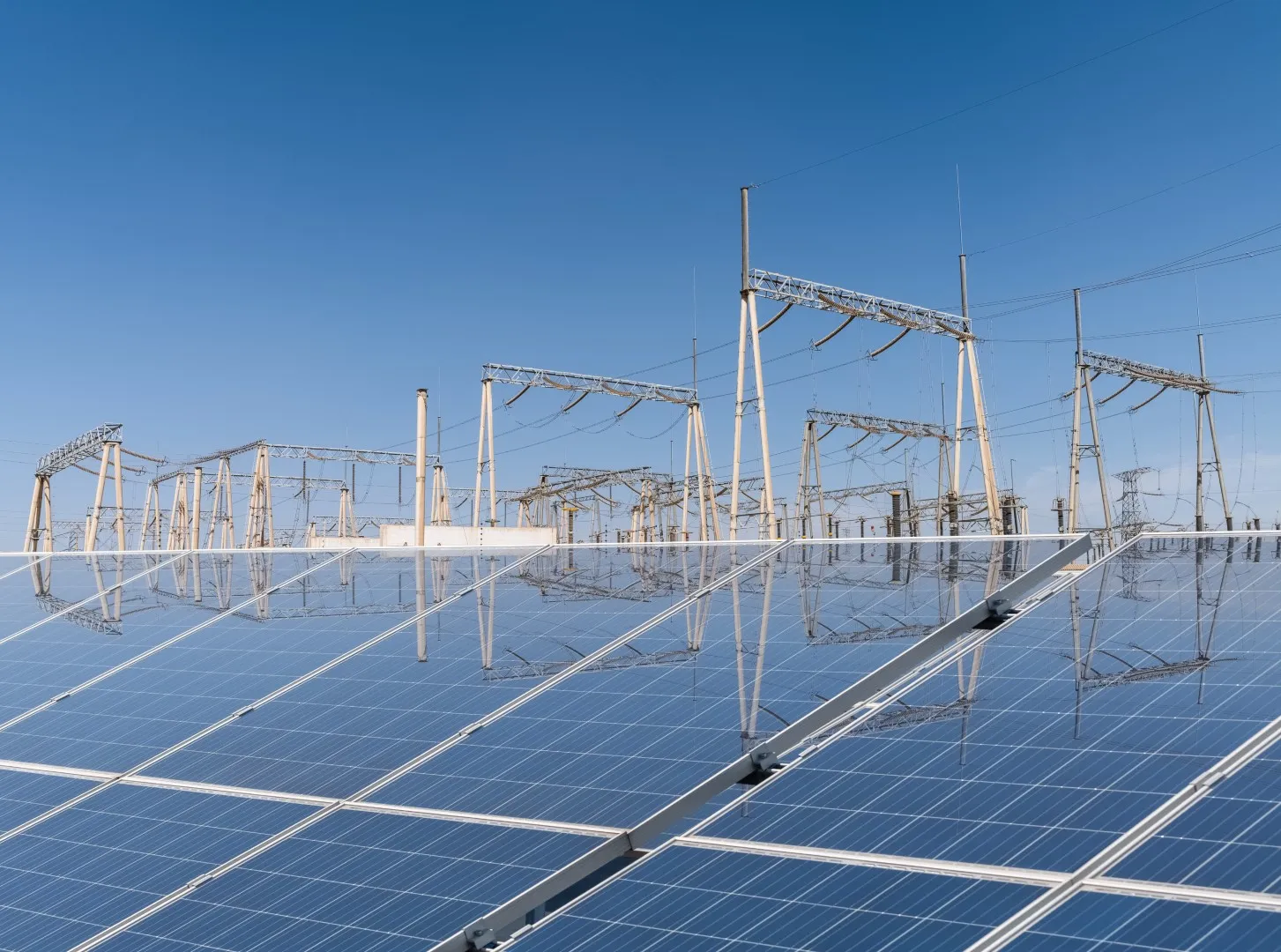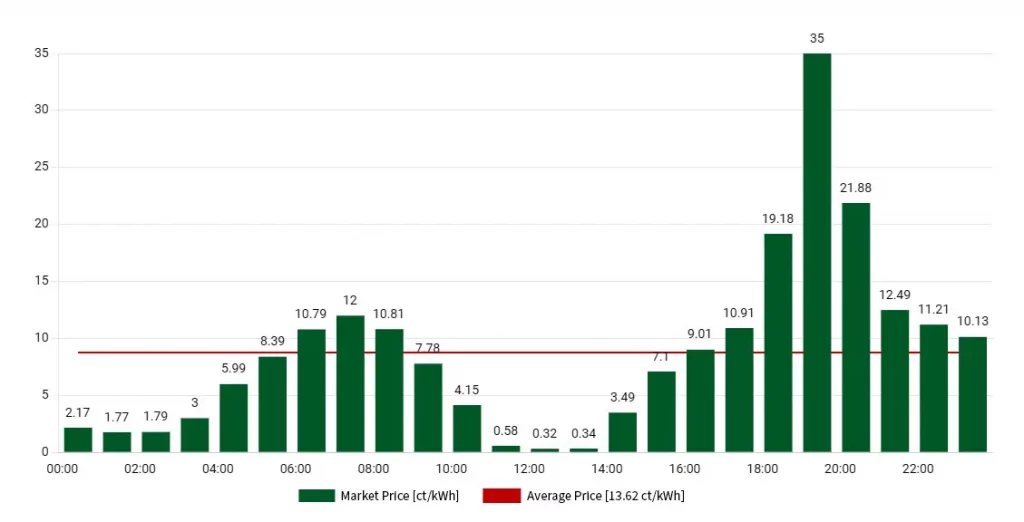Stand-alone
Stand-alone storage systems can make optimal use of the available technical capacity of the grid connection to flexibly feed battery power into the grid or draw from it. This significantly contributes to the reliability and stability of the power supply.
Their greatest advantage, however, is that the grid connection can be utilized continuously by the battery storage system – around the clock, 365 days a year. There are therefore no time-based or capacity-related limitations. This provides maximum flexibility in all markets and enables the highest potential returns compared to other storage solutions.
Co-Location
Co-location refers to the combination of a ground-mounted renewable energy (RE) system with a battery storage system at the same site and sharing a common grid connection. This concept provides a smart answer to the challenges of land use and grid connection for storage and other RE systems.
By sharing land and infrastructure, the efficiency and economic viability of projects can be significantly increased.
Standalone ↔ Co-Location
| Feature | Colocated Storage | Standalone Storage |
|---|---|---|
| Grid connection | Use of existing grid connection point (GCP) from wind or PV | Independent grid connection |
| Operating model | Arbitrage Balancing power | Self-consumption optimization Flexibility marketing Balancing power Arbitrage |
| Profitability | Ideal with existing GCP | Highest revenue potential with free optimization |
| Site planning | Plant-related | Regionally selectable |
Overbuilding of Grid Connection Points
By installing a co-located battery storage system at the existing grid connection point, the central bottleneck of planning – the approval and implementation of a new grid connection – is eliminated.
Since grid compatibility checks, land approvals and technical connection permits already exist or only need minimal adjustments, coordination and construction times are significantly reduced – project planning and implementation gain considerable speed.

The arbitrage market makes it possible to take advantage of price differences in electricity trading by purchasing (charging) energy during low-price periods and selling (discharging) it during high-price periods. Co-located storage systems – battery storage located in close proximity to grid or trading hubs – are particularly well suited for this, as they can respond quickly and precisely.
Trading mainly takes place on the day-ahead market, where electricity is traded in hourly blocks one day in advance, as well as on the intraday market, which allows for short-term optimization up to just before delivery. Since charging and discharging cycles limit the battery’s lifespan, operation is planned in such a way that maximum price differences are exploited with as few cycles as possible.
A special economic advantage currently arises from the exemption from grid fees for storage systems until August 2029, which significantly reduces operating costs and makes arbitrage transactions even more profitable. The combination of market access, rapid responsiveness, strategic cycle management and cost benefits from the grid fee exemption makes arbitrage trading with co-located storage particularly lucrative.
Self-Consumption Optimization / Peak Shaving
Self-consumption optimization with a stand-alone storage system in commercial or industrial companies means that the self-generated electricity – usually from a photovoltaic system – is used locally as much as possible instead of being fed into the public grid. Surplus energy that is not needed at the time of generation is stored in the battery and made available later, for example in the evening hours, during production peaks or when energy demand suddenly increases.
This significantly reduces the need to purchase expensive grid electricity, which not only lowers energy costs but also increases independence from the utility. In addition, the storage system can balance load peaks (“peak shaving”), which may also reduce grid fees. Overall, this technology enables more efficient use of self-generated electricity, increases the profitability of the PV system and helps companies optimize their energy costs in the long term.




